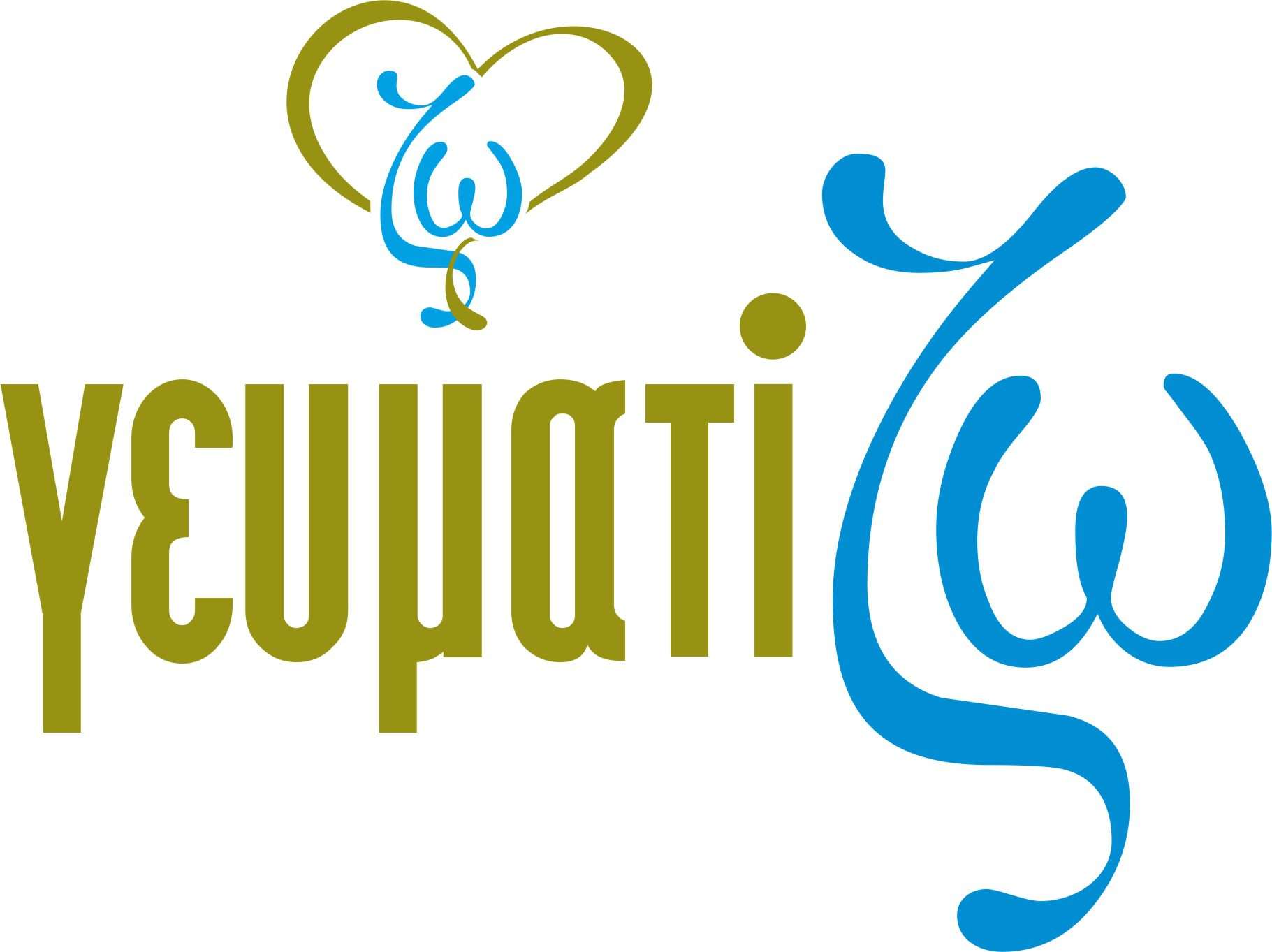FIREWALKING IN NORTHERN GREECE (Πυροβασία στη Βόρεια Ελλάδα)
Two months after I arrived in Athens, in the fall of 1946, I came to know a very interesting person by the name of Dr Angelos Tanagras. He was the team leader of a group of about a dozen people who used to practice and attend spiritualistic seances. Out of curiosity, I joined in and attended a few of these meetings which were taking place in his home, somewhere in Athens.
In that place I noticed that there was a permanent exhibition of different articles of clothing and other objects used by mediums, and among them my attention and interest was drawn to a show case in which a pair of medium thickness, black, cotton socks were exhibited. According to the inscription on this show case, these socks were worn by “archianastenarissa” (that is the chief female leader of the firewalkers, most often the wife of “archianastenaris” who is also a prominent actor in these proceedings), during firewalking at a certain village, on a rather recent date. The note continued to say that these socks were quite intact by the incandescent charcoals on which this woman walked because they were protected by the “aura” emanating from her body. That has been my first chance encounter with the ceremonial practice of fire walking in Northern Greece! By the way, the fire walkers we saw ourselves were barefoot and not wearing socks.
The second and most important encounter was realized 29 years later, when Dr. Forrester persuated me to visit with him a certain village in Northern Greece, by the name of Langadas, in May 1975, during the festivities of “anastenaria.” The events that I have observed and studied during that visit and afterwards constitute the material and foundation stone for this presentation today.
But at first let us say something about the specification of these people who are practising firewalking in many villages of Northern Greece. Well, generally these people call themslves “anastenarides” (singular:”anastenaris”). By this term they are also generally known all over Greece, as well as in the world at large!
The etymology of this term is not definitely decided. According to some scholars this is derived from the verb “anastenazo” which means “I heave a sigh” because during firewalking the firewalkers proceed by short, quick dancing steps, while they let out rythmical screams such as “eh, ih, ih, ouh.” (By the way, by this practice it is almost certain that these people develop a substantial degree of hyperpnoia alkalosis, which heightens their inebriation and exaltation!). But other scholars claim that this word is derived from the verb “anastenomai” which means “I resurrect from the dead” (classical example, resurrection of Christ). According to a third version, the term is derived from the word “asthenaria,” which were festivities common during the 12th and 13th centuries, taking place in this region and elsewhere in the Balkans and the East by groups of people belonging to different Christian
-2-
sects. This term derives from the word “asthenis,” which means “a sick person” and accordingly “asthenaria” were the festivities enacted by sick persons.
It is believed that these celebrations constitute the continuation of Bacchic orgies (Dionysia or Dionysiaka) of ancient Greece. This kind of festivities derives, or constitutes the continuation of activities which have been part and parcel of reverlies that accompanied humans and humanity as a whole during prehistoric and historic times in many countries all over the world!
It seems that, even in prehistoric times, this kind of behaviour was quite commonplace practice. I think that we don’t need a great flight of fancy to imagine that a loss of footing of a drunken ceremonial dancer around the smooldering charcoal of the barbecue fire will end up in a kind of unintentional firewalking! And, naturally, in case this person intentionally tries to repeat this feat, it will make a vivid impression and create a sentiment of admiration of the onlookers towards the person who obviously disregards the danger of burning his feet by the fire and successfully overcomes fear and timidity.
In time, this firewalking developed into an art of ceremonial dancing, practiced by different denominational groups as an act of religious significance and devotion and as such it was infiltraded into many feasts and celebrations practised by Christians as well as by believers following other religions. In all such cases, the firewalking dancers are special, highly honoured individuals, with specific important privileges within the society in which they live. They are considered mystics, that have been endowed with heavenly knowledge and superhuman wisdom. In all cases their supernatural as they claim achievements are arttributed, by them as well as by the society in which they live, to an intervention of a deity or, more often, of a special saint.
In the case of the firewalkers at Langadas and many other villages in Northern Greece, the fire walking actors believe that isapostles Saint Constantine the Great and His Mother Saint Helen are protecting them from burning by their divine intervention during these celebrations. When asked about their “akaia,” that is about their attribute of “not being burned” by fire, they unanimously exclaim that this is achieved by their FAITH in and WORSHIP of these Saints!
We went to Langadas village on two consecutive days, i.e. on the 20th and 21st of May, 1975. Although these and associated festivities take place every year during the whole month of May, for the initiated, these are especially peaked and made public on these two days because on May 21st the official celebration by the Hellenic Orthodox Church in honour of Isapostoli Constantine and Heleni takes place.
-3-
What happens before as well as afterwards of these dates during the whole month of May is very obscure and mysterious, and according to some
authorities constitutes the real, soul and body rooted festivity actions of the mystics or loyal believers (men and women). The festivities begin on May 2nd as a preparation for the real or uppermost celebration of 19 days later. Late in the afternoon married women and virgins of the village, dressed in their best gorgeous and brilliant attire take the sacred icon of Constasntine the Great from the church and carry it in procession, with candles and incense and position it on the sacred shrine by the holy water spring. After they have cleaned and adorned it, and throwing coins into the sacred spring, and washing their hands and face and using incense and rendering thanks to God in prayer, they form up a choir chanting popular songs and begin dancing in a delirious condition to the sound of bagpipes, lyra and side drum, and proceed to the village square. This pre ceremonial festivity is repeated day after day by the women of the village until the 21st of May.
In the meantime, later into the small hours of the night, it seems that other mysterious activities are enacted by a circus of fanatic believers. These people are believed to be blessed by the grace of the saints and are elevated to the levels of hierophantes and the divinity. After a heavy drinking bout, and a frenzied orgiastic dance, in the village square, they suddenly begin to tremble, and foam appears from their mouth, they become delirious and frantic. Under these conditions the onlookers, holding lighted large church candles, begin incensing them when, all of a sudden, the dancers jump up, seize the holy icons of the saints and run in a state of delirium away from the village, towards the surrounding mountains and valleys, jumping and dancing furiously until their estromania wears out in a state of complete exhaustion!
And now let me narrate and show what Dr Forrester and I have seen and experienced during our two visits to Langadas village on the 20TH and 21ST of May 1975, with the help of some Slides of photos I have borrowed from The MEGA Greek Television Station. These photos, as well as the short Video tape which will be shown hereafter, were taken during the last year’s similar festivities (i.e. 2003) in this same village.
We arrived there late in the afternoon and we were escorted into the house of the Archianastenaris where we were introduced to him and his wife, the Archianastenarissa! (SLIDE No 1) (Please note that the people we see here and on all subsequent slides are NOT the ones we have met 28 years ago, in 1975!). We were seated in a room similar to the one we see here, where the icons of Saint Constantine and Saint Helena (his mother) were exhibited. In this SLIDE we see the Archianasterissa worshiping the holy icons, while her husband (The archianasteraris) is expecting to wellcome some visitors.
On SLIDE No 2 we see the drummer (and behind him another musician, playing the lyra), who play, and they are going to continue playing their special for the occasion music, very probably during the whole night, up to
-4-
the early hours of the next day! Archianastenarissa (and another worshipper to her left) have already started performing the peculiar dance, an act that will be continued all night long.
On SLIDE No 3, we can see archianastenarissa and some other people worshipping the holy icons while others are dancing to the music. Please note the way the young nipper is absorbing everything that is happening in his sourroundings! In a few years time he will be one of the chief actors of this mysterious magic performance!
And now, with SLIDE No 4, let us proceed to the next day afternoon (May the 21st). Here we see the pile of cord wood erected in the middle of the village square while experts are engaged in the act of setting fire to the logs! This is done about 2 hours before the firewalking is programmed to take place.
SLIDE No 5. Here we can see the start of the march of the firewalkers and many onlookers from Archianastenaris home to the village square, at about 2 hours after setting fire to the cord woods. Please note that this march is enacted to the accompaniment of music by a drum and a lyra player, and the chief actors are leading the procession dancing, while their whole appearance gives the impression that these persons are in a state of trance.
SLIDE No 6. Here we witness the procession towards the village square where the firewalking is going to take place. Here we can see at the head of the march four believers who in a few minutes they are going to start the “fire dance,” carrying the holy icons of St Constantine and His Mother Helen as well as two other sacred objects.
SLIDE No 7. Here we can see The Archianastenaris with an incense boat in his right hand, proceeding with dancing steps around the spread out burning charcoals, followed by another fire walker holding the holy icon of St Constantine. After compleeting one round about the fire, followed by the musicians and many people of the village, he will proceed to step onto the burning charcoals!
SLIDE No 8. Several barefoot firewalkers are dancing around the fire, before stepping on to the burning charcoals.
SLIDE No. 9. Firewalking proper or firedancing. Some of the dancers consented to have their feet examined by Dr Forrester and myself immediately after their firewalking adventure!
SLIDE No. 10. Same as the preceeding slide. We can watch this “live” much better later on the video.
THE VIDEO SHOW
-5-
Well, this is about all we have witnessed during our visit to this village. Although we have heard that during the all night dance in the archianastenaris home the dancers consume large quantities of wine and other stronger alcoholic drinks, we did not have the chance to witness it.
According to some rumors, as well as some hints in different presentations of this subject in cyclopaedias and other media, one can get the feeling that what is shown at these festivities during these two days of the 20th and the 21st of May at Langadas and other villages in this region are far away from what is really happening during the whole month of May in these villages. According to these sources, the firewalkers (men and women) are engaged during the whole month of May in orgiastic rites in homes in the village, as well as in certain places, caves and other secluded sites in the mountains and valleys around the village! Nothing is really certain about the nature of these festivities! Perhaps some eventualities might be inferred by analysing the monthly birth rate data in this region !




